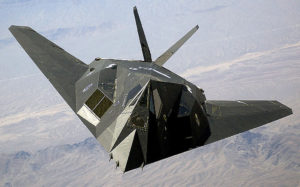“Can we imagine what guided 50-caliber bullets will look like for an infantry soldier ten to fifteen years from now?”
Shawn Brimley’s question from a recent AEI event on defense choices the next administration will face looms ominously. America faces unprecedented and growing national security threats. The nation is threatened by China and Russia’s growing technological advancements, Iran’s quest for global hegemony, and North Korea’s lack of predictability as their nuclear bomb testing demonstrates. Even though the dangers these countries pose are Washington’s top national security priorities, a new, all-encompassing, technological strategy is needed in order to combat the underlying threat of our adversaries’ technological advancement.
Though the U.S. military far exceeds other countries’ technological capabilities, the American military edge or initiative is “eroding” according to Brimley, Executive Vice President and Director of Studies at the Center for New American Security. Many echo him.
Under Secretary of Defense for Acquisition, Technology, and Logistics Frank Kendall recently said returning to work at the Pentagon led him to realize that the United States has a problem. This problem is “the modernization rate of other powers, in particular of China” in their strategic technological investments. China, for example, is seizing the opportunity to catch up to the U.S., militarily and technologically, by expanding their defense budget by more than 10 percent a year.
Last year, Secretary of Defense Chuck Hagel also said that American dominance can no longer be taken for granted; he called for an innovative effort known as the “third offset strategy.” The term ‘offset strategy’ refers to combatant and defensive technological breakthroughs intended for national security. These modernizations would include stealthy unmanned planes and underwater vehicles that operate autonomously. This new strategy is part of a long-term competitive effort to bolster and extend U.S. deterrence capabilities against countries that can acquire and produce advanced weapons systems. America is precariously trying to maintain its superior military edge, which is why this third offset strategy partners China and Russia, who are currently investing heavily in second offset technologies (e.g., precision guided weaponry in warships and combat aircraft, and cyber capabilities).
Hagel and others are calling for a ‘third’ strategy since this will be the third time America has sought strategic and technological improvement since WWII. The first offset strategy occurred in the 1950s when the U.S. was defending itself against potential Soviet attacks. The second strategy was then conceived in the 1970s; included investment in precision-guided missiles, the Global Positioning System (GPS), and more; and again sought to deter the Soviets.
The U.S. never ended up using these technologies against Soviet forces. Robert Tomes, Professor at Georgetown University and consultant through Liminal Leadership, LLC, describes the second offset strategy as having emphasized new intelligence, surveillance, reconnaissance platforms, and improvements in precision-guided weapons, stealth technology, and space-based military communication. The F-117 stealth fighter, for example, was among many of the key resulting systems. These capabilities were finally utilized to expel Iraqi Forces from Kuwait with relative ease during Operation Desert Storm. The noted success of this strategy in the 1990s paved the way for what was known as an “American Way of War”, characterized by persistent conflict and hybrid wars according to Tomes.
Since Desert Storm, the U.S. has sought to establish a “qualitative” military edge and assumed that American adversaries would instead seek a “quantitative or numerical” edge on the battlefield. Andrew J. Bacevich in Breach of Trust: How Americans Failed Their Soldiers and Their Country discusses how this transforming military rhetoric led to the belief that the U.S. military could subvert opponents with a “do-more-with-less” approach. After 1991, Washington began focusing almost solely on advancing the quality of the military; officials saw no need to expand in quantity or to mobilize the home front. Ever since, American victory has been expected through qualitative advancement alone.

As a metaphor for assumed American victory with second offset capabilities, picture the F-117 stealth fighter with unprecedented stealth capabilities, making it virtually undetectable. Its ability to see, shoot, and kill the enemy even before detection was an exact representation of the success the American military assumed it could achieve through its second offset strategy capabilities, according to Brimley.
However, the technological advantage America has experienced, and taken for granted, may no longer guarantee victory on its own. This is a present concern, despite the fact that America still possesses the most capable armed forces in the world to this day, with a budget of $601 billion (more than the following top nine militaries in the world combined). America’s eroding military edge is largely due to the fact that second offset capabilities are now widely available to friend and foe alike, such as colossal computational power, rapid data processing, and sophisticated censors and bandwidth.
Brimley and Hagel point to the fact that the U.S. military ought to be fiercely attentive to adversaries’ growing technological abilities, including systems such as precision guided munitions and A2/AD capabilities, or “anti-access/area denial.” Countries like China, and increasingly Russia, Iran, and North Korea, use the A2/AD strategy to effectually make it too dangerous for American aircraft carriers to operate close to these country’s shores, which also potentially threatens American bases close by. For these reasons, Brimley highlights the necessity for the next administration to utilize third offset strategy capabilities.
On a similar note, one of the main keys to the third offset strategy will be seeking asymmetric advantages that capitalize American strengths and exploit adversary weaknesses. This could involve the U.S. seeking asymmetric gains through technology and strategically aiding its allies like Taiwan in the South China Sea, according to panelists at a recent Hudson Institute event.
Ultimately, a combination of inflated confidence in the superior quality of our nation’s military without increased technological advances and aid to American allies will not be enough to stave off the increasingly sophisticated and qualitative threats the U.S. will face to its security in the not-to-distant future.
—
Jessica Meyers is an intern for Providence. She studied at Westmont College, with a focus on Political Science and English.
Photo credit: An F-15E Strike Eagle sits on the flightline at Incirlik Air Base, Turkey, Nov. 12, 2015. Six F-15Es from the 48th Fighter Wing deployed in support of Operation Inherent Resolve and counter-Islamic State of Iraq and the Levant missions in Iraq and Syria. By Airman 1st Class Cory W. Bush via U.S. Air Force.






 Sponsor a student for Christianity & National Security 2024
Sponsor a student for Christianity & National Security 2024